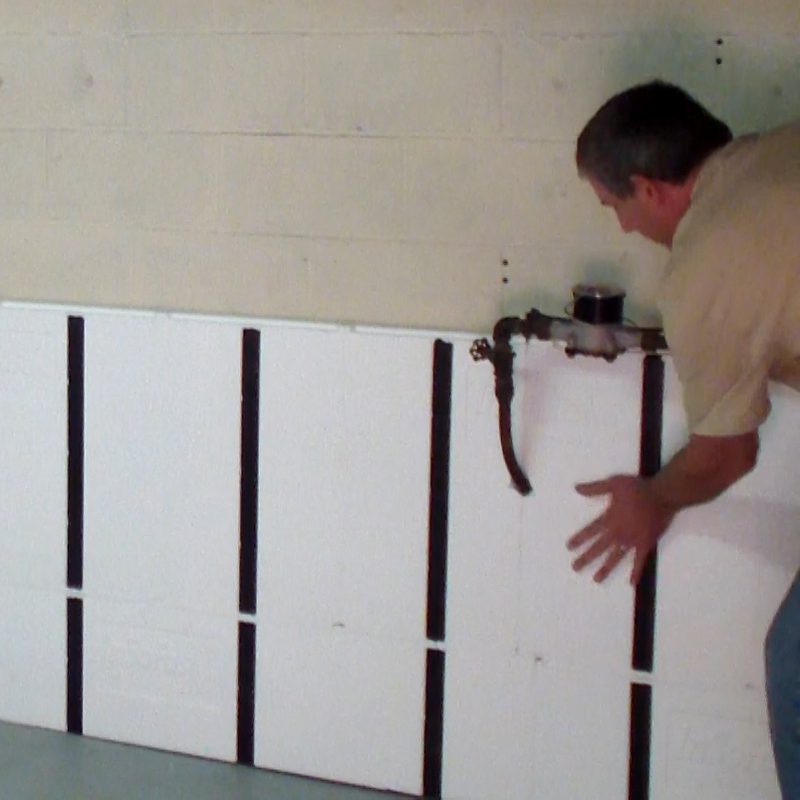The easiest way to work around pipes and other obstructions along your wall is to simply carve the InSoFast around it and fill the gap with spray foam.
When the spray foam has set, use a knife to shave off the excess.Below are a few options and ideas for how to finish around obstructions that stick out past the InSoFast panels.

Cut the InSoFast panels approximately ¼” inch shy of the pipe’s perimeter.

Any time you cut an InSoFast panel you should put an extra bead of adhesive on the foam near the cut in order to solid-back the panel to the wall.


Fill in the gap with expanding spray foam after you’ve finished your installation to seal around the pipe.
Pro Tip:InSoFast panels come in big cardboard boxes which can be utilized in several practical ways throughout your installation process. In order to make the right cuts around a pipe, we recommend using with a piece of the cardboard box to make a template of the necessary shape. Once you have the right template, simply trace it over the InSoFast panel and make your final cuts. Simple Templates for Complicated Cuts Video
Building out the wall
If your floor plan allows for it, you can conceal the pipe inside an intersecting wall such as a bathroom plumbing wall or partition wall. Be sure to provide an access cover for the cleanout. Please read our intersecting wall guide at Technical > Interior Guides > Attaching Intersecting Walls for information.
Bringing out the entire wall by screwing furring strips to the InSoFast studs is another option. While this option works well, it will have a greater impact on your final floor space.

One DIY-er in Vermont had a very tricky set of pipes in his basement so he decided to cover over all of them with this method. Luckily, he had enough clearance behind the pipes to fit InSoFast EX 2.5 panels. You can read about his project here: Explore > Featured Projects > Frozen Walls and Plumbing Obstacles.
Running Pipes through the Electrical Channels
While this may sound like an ideal way of hiding ugly pipes in your home, we typically discourage running pipes behind the panels as this may result in freezing and bursting.
Covering pipes behind the insulation separates them from the warm conditioned space and exposes them solely to exterior temperatures. Even if you have never had problems before, this method can actually create the conditions that allow them to freeze.
However, you may be able to successfully install piping, such as PEX, behind the panels if you are in a climate zone that does not experience freezing ground temperatures.
You can also mitigate the potential of frozen pipes by insulating your walls on both the interior and exterior sides. Insulating only on the exterior side would not only be more budget-friendly, it may also be more effective.


